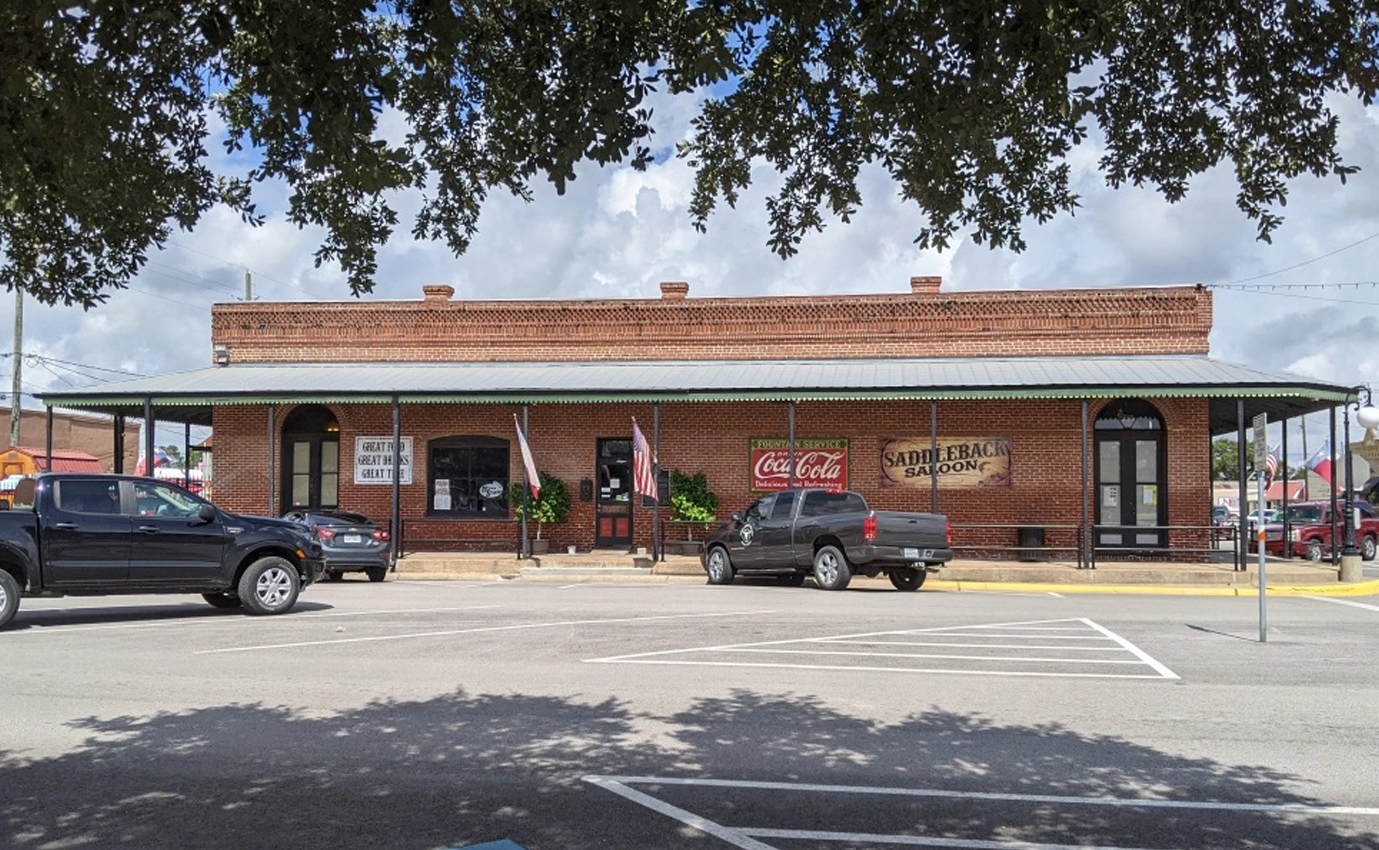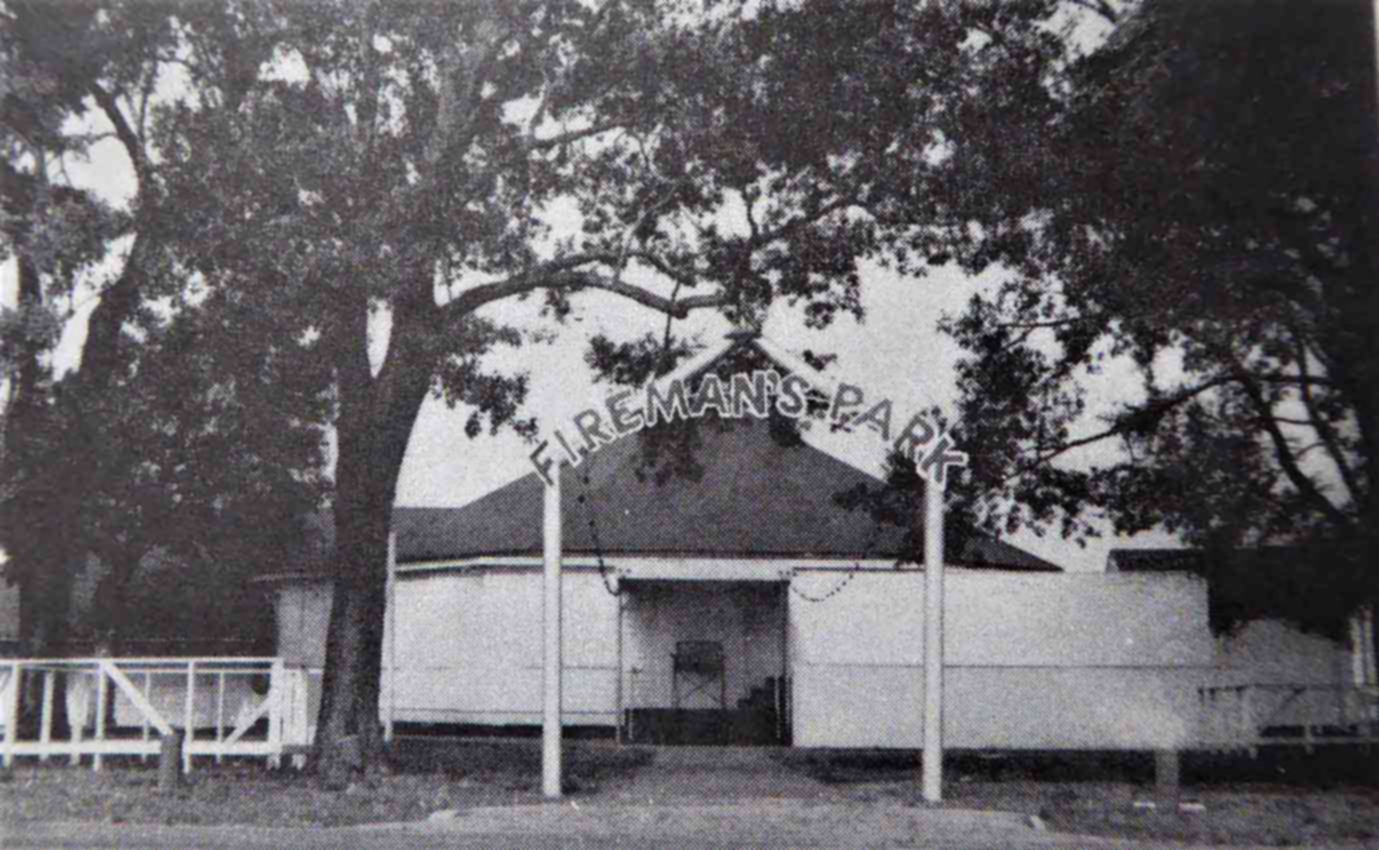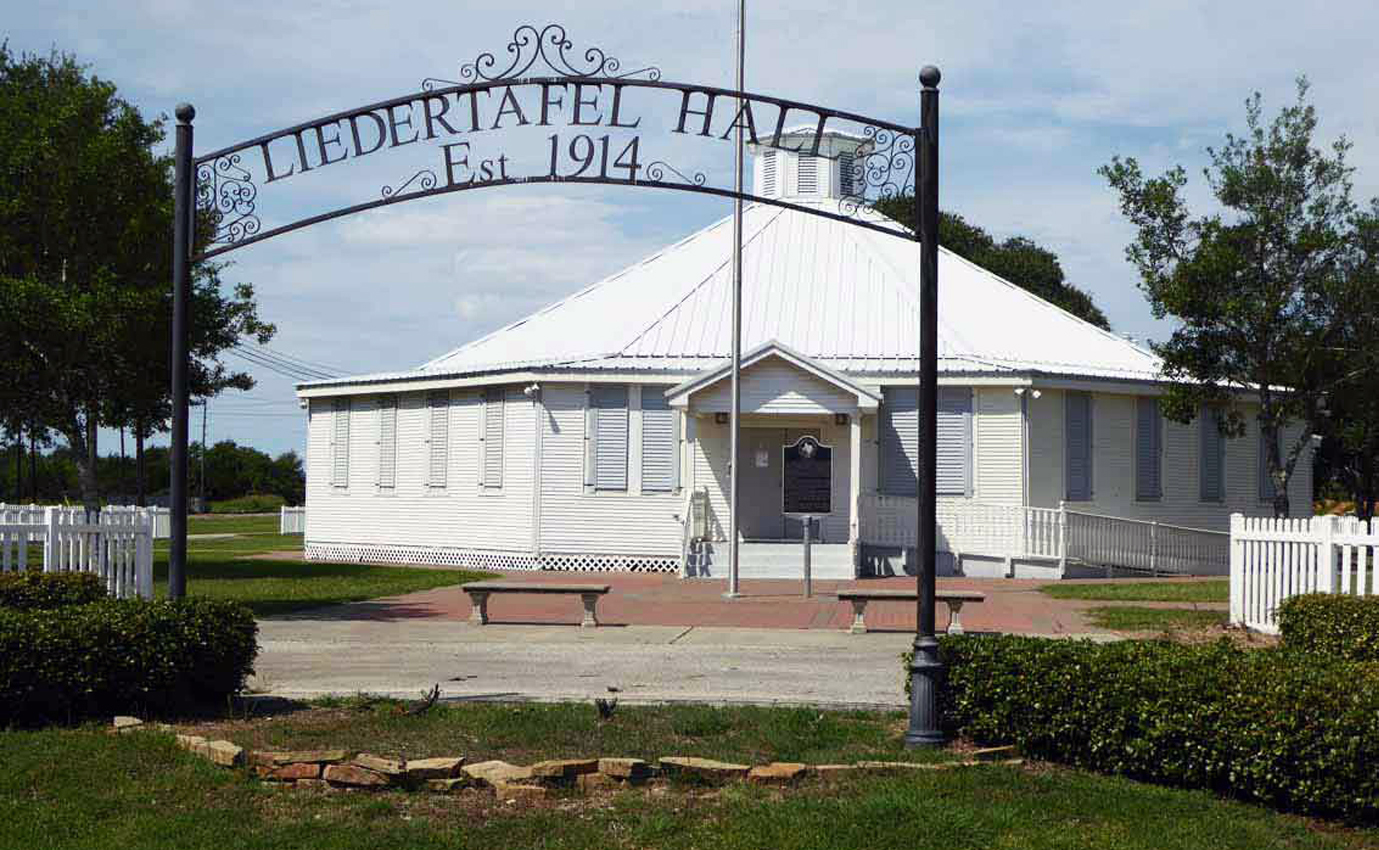Come Visit The Historical Buildings Of Sealy, TX
City of Sealy – Marker No. 4623
Founded in 1879 on the route of the Gulf, Colorado and Santa Fe Railroad, Sealy was named or Galveston Businessman and Railroad President George Sealy (1835 – 1901). By January 1880, a depot was established here and both freight service and passenger service were inaugurated. Sealy became a main division point between Galveston and Temple while the railroad was the town’s principal employer.
In Addition to the depot, Sealy was the site of a Roundhouse, Wooden Turntable and Machine Shops. By August 1880, two passenger trains and two freight trains passed through the town daily. Sealy soon boasted numerous homes and businesses, including hotels, retail stores, factories, cotton gins and grist mills. The Citizens organized a Public School and a number of Churches.
By 1899, the Santa Fe Railroad division point was moved to Bellville, causing Sealy’s economic base to shift to agriculture. The Missouri, Kansas and Texas (Katy) Railroad had built a line through here in 1892 and the Cane Belt Railroad, linking Sealy to Matagorda, began operations in 1903. Diversified businesses kept the town thriving and in 1949 the citizens of Sealy voted to incorporate.
Location: 415 Main Street
Sealy, TX
City of Sealy - Marker No. 4623
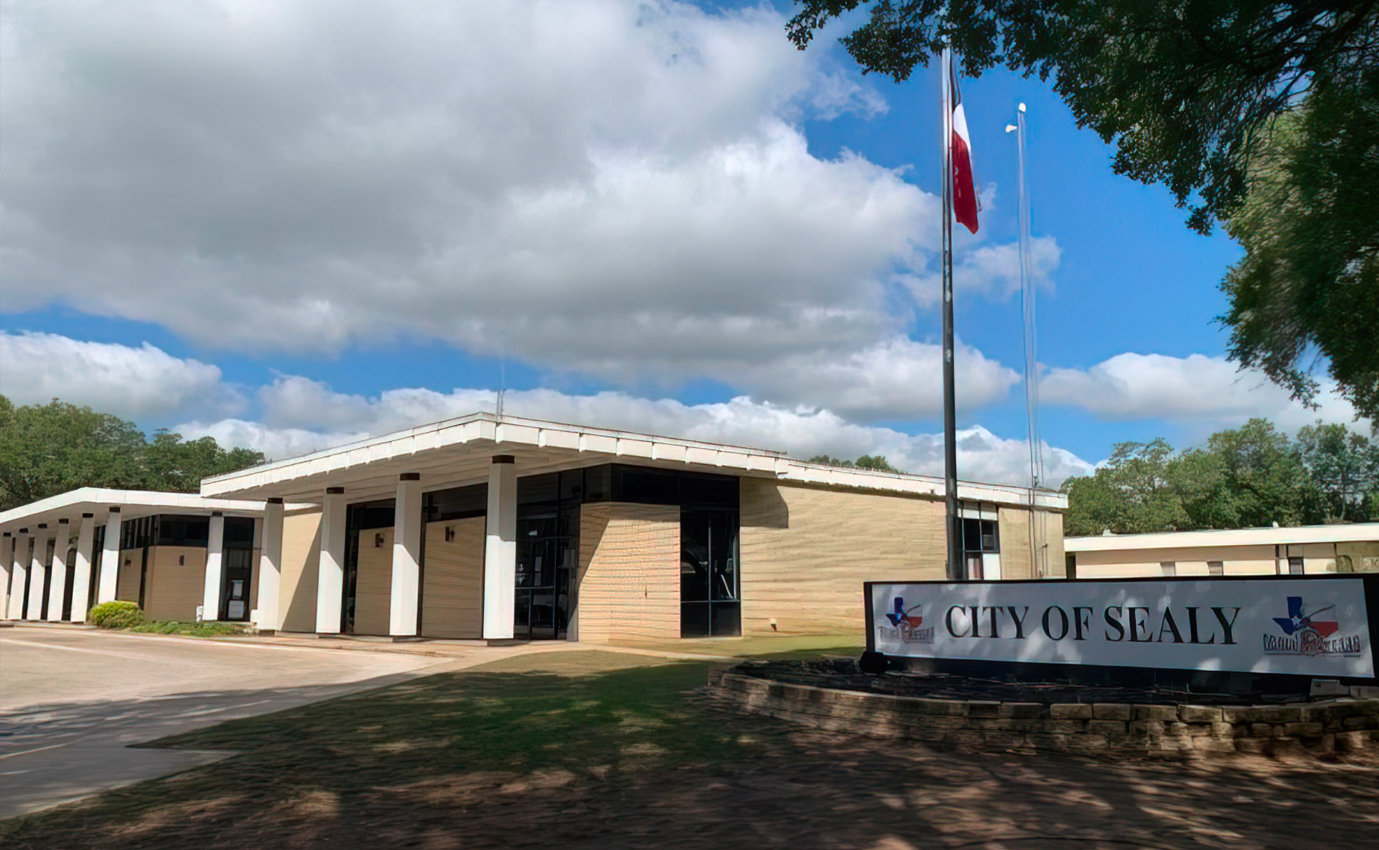

Sealy Cemetery – Marker No. 4624
In 1879, Gulf, Colorado & Santa Fe Railway Company Agent George Sealy purchased 11,635 acres at this location from the township of San Felipe De Austin for the purpose of establishing a Railroad Depot. The Village of Sealy soon developed around the Depot and on July 5, 1883, it recorded its first burial here, that of the infant Annie Fowlkes.
Families that settled in Sealy purchased Cemetery Plots directly from the Railroad until the company donated the land to Cemetery Trustees – C.H. Ruff, R.P. Josey and John Hackbarth in 1887.
The Sealy Cemetery Association was founded sometime prior to 1898 and officially chartered in 1924. The ladies of the Cemetery Society, organized in 1904, helped the Association cultivate community support to upgrade and maintain the cemetery. Two notable Society Members, Mrs. J.W (Vera) Ripple and Mrs. Paul (Mahala) Hackbarth, helped organize a Christmas Bazaar Fund-Raising Event in the 1930’s that developed into an important Annual Social Affair in the Community. Among the more than 2,400 grave sites are those of many of Sealy’s early residents. The cemetery boasts a variety of gravestones and statuary, as well as two Mausoleums.
Location: 833 Main Street
Sealy, TX
Sealy Cemetary - Marker No. 4624
Liedertafel – Marker No. 11967
Sealy’s German Immigrants were famous for their love of music. A group of men, some of them Sealy’s pioneer settlers, had formed a singing society called Liedertafel by 1899. They met primarily in the home of Ferdinand Lux. Lux and Fritz Kinkler, Jr. gave land for the establishment of a permanent building in 1912 – 1914. One of a number of round frame dance halls built in German communities in Texas, this structure was erected beginning in 1914. The eight-sided hall was built from materials purchased from the F. W. Hackbarth Lumber Company. There were about 19 singing society members in 1914, and they hosted many concerts, festivals and dances for the community. The Liedertafel Hall was a popular gathering place for special events for many years. Other organizations, Lodges and Churches used the grounds and hall for their own celebrations as well. In 1934, the Sealy Volunteer Fire Department began holding its Annual “Firemen’s Frolic” Fundraiser at the hall. By 1944, the building was in need of repair and the Singing Society Members were aging. Stockholders voted to sell the hall and land to the Fire Department, which raised funds to purchase and renovate the structure. It became known as the “Firemen’s Hall”. In June 1945, the new “Fireman’s Park” opened with a celebration. The following year, the Houston Post reported 5,000 attendees at the ”Firemen’s Frolic”. The Firemen donated the hall to a local Historical Society in 1995 and renovations began that year.
Location: 116 Lux Road
Sealy, TX
Liedertafel - Marker No. 11967
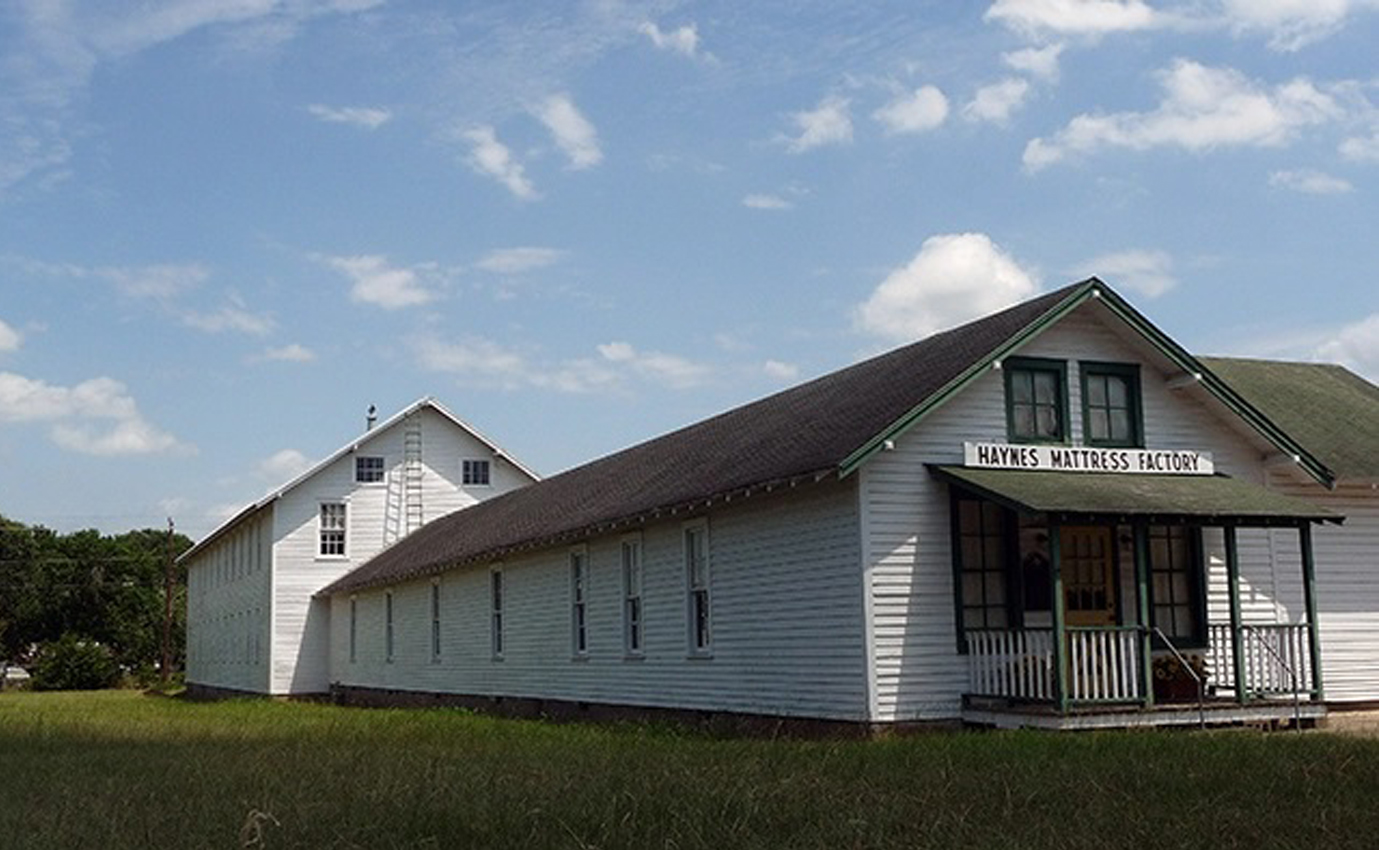
Haynes Mattress Factory – Marker No. 2411
Daniel Haynes (1828 – 1913) came to the new railroad town of Sealy in 1881. In 1885, he invented a process and a machine to manufacture a felted cotton, non-tufted mattress. Trademarked under the Haynes name, the mattresses were sold throughout the country and soon became associated with the name Sealy. In 1906 Haynes sold his patents to another company, which adopted the name Sealy. Haynes opened a new mattress factory at this site in 1909. It remained in operation after his death, maintaining its reputation as one of Sealy’s primary industries until 1976.
Location: 109 N. Hardeman
Sealy, TX
Haynes Mattress Factory - Marker No. 2411
Haynes-Felcman Home – Marker No. 11701
Built in 1901-1902 for H. Schumacher, it was purchased in 1906 by Richard H. Haynes (1875 – 1942) who, with his father, founded the Haynes (Sealy) Mattress Company in 1909. Local confectionery store owner F. J. Felcman bought the property in 1927 and added on to the rear in 1929. It remained in his family until 1995. The structure is a fine example of a Queen Ann Residence with a projecting front gable decorated with wood shingles, stained glass and jigsawn brackets. The front porch also displays late Victorian details including wood balusters and frieze.
Location: 305 Hardeman
Sealy, TX
305 Hardeman - Marker No. 11701
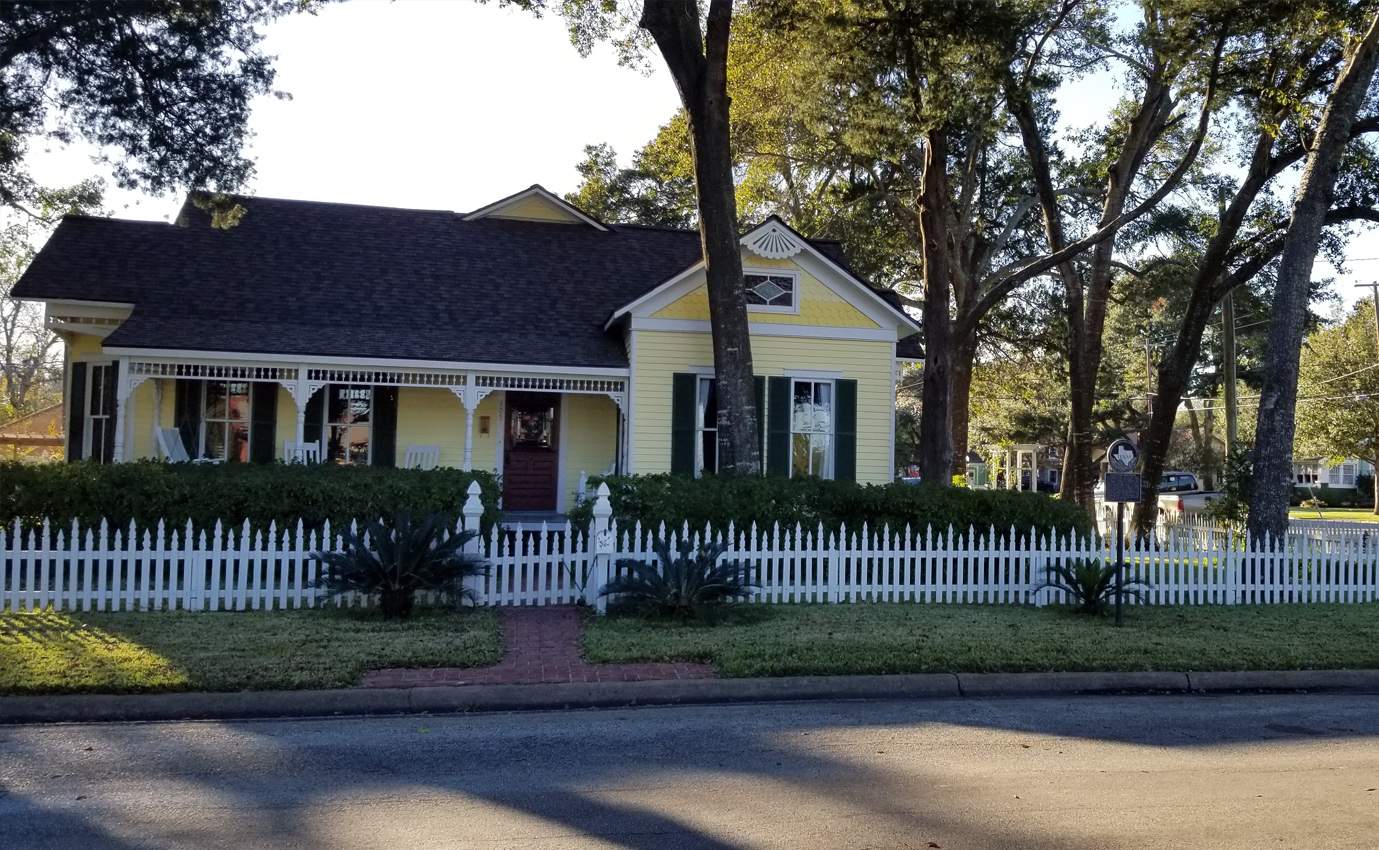

Dr. James West Bostick – Marker No. 469
James W Bostick was one of Stephen F Austin’s ‘Old 300” settlers and served in the Confederate Army for 4 years. Later he became a Doctor and married Rebecca Taylor, daughter of a prominent East Texas family. They moved to Sealy in 1885, helped found St. John’s Episcopal Church and built their home in 1895. One of Sealy’s first Doctors, he also owned and operated a drugstore.
Location: 319 Hardeman Street
Sealy, TX
Dr. James West Bostick - Marker No. 469
Paul & Mahala Gackbarth House – Marker No. 2326
Completed in 1922 for Civic Leaders Paul and Mahala Hackbarth, this concrete block house is an unusual example of vernacular architecture. Prominent features include a wraparound porch, ionic columns on piers and large wood sash windows. The Hackbarth Lumber Company, one of the earliest businesses in Sealy, promoted the use of concrete blocks for local buildings and this house is a fine example of that construction method.
Location: 325 6th Street
Sealy
Paul & Mahala Hackbarth House - Marker No. 2326

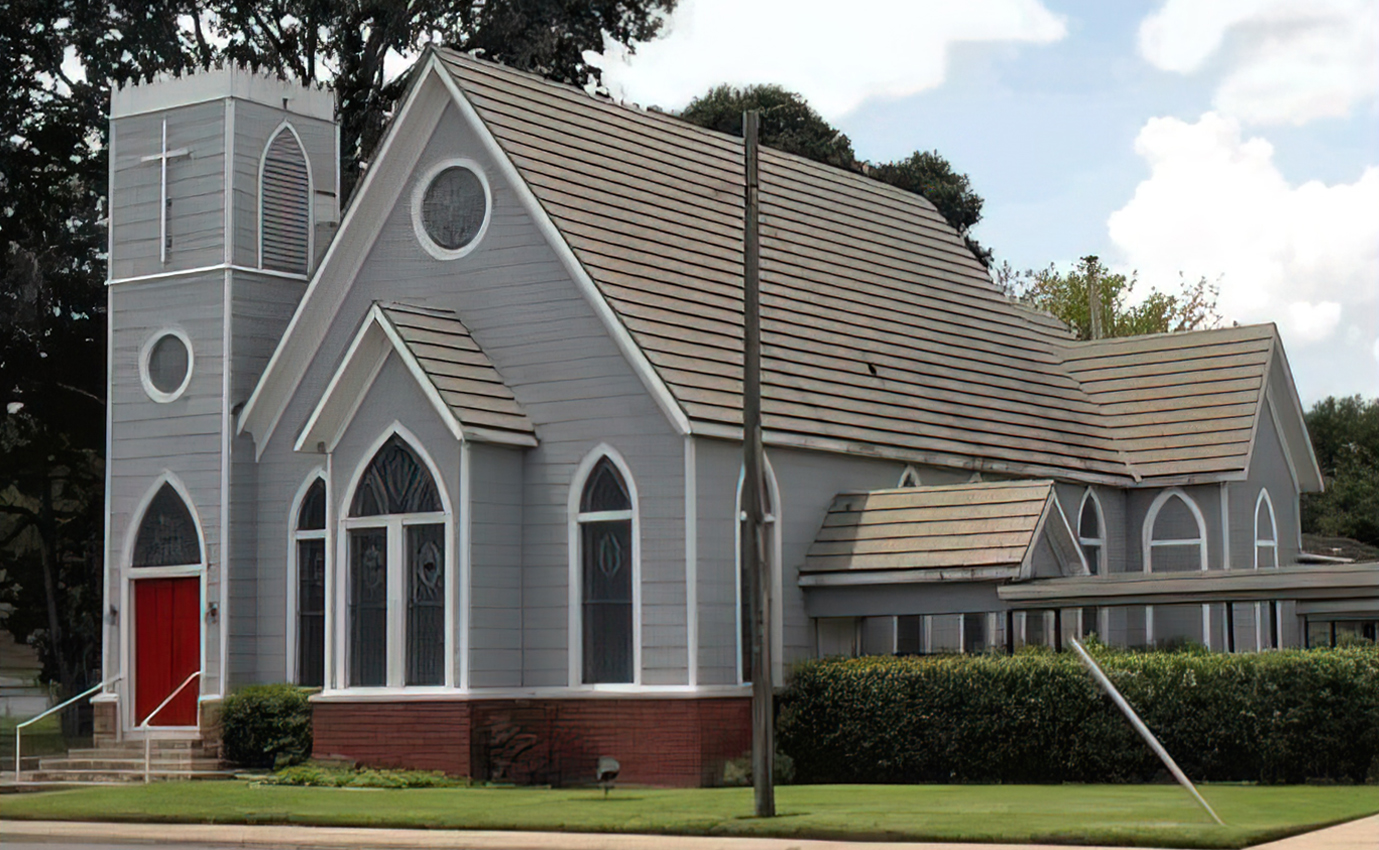
Saint John’s Episocopal Church – Marker No. 4451
This congregation was organized in 1885, six years after the railroad town of Sealy was founded. Among the church’s early supporters was railroad official George Sealy, for whom the town was named and who served on the Missionary Board of the Episcopal Dioceses of Texas. The Congregation’s first building, erected two blocks north of this site in 1889, was destroyed in the 1900 Hurricane. A new church structure was built at this site in 1920. Throughout its history, Saint John’s Church has served the community with worship, education and outreach programs.
Location: 515 Meyer Street (Hwy 36 South)
Sealy, TX
Saint Jon's Episcopal Church - Marker No. 4451
Trinity Lutheran Church – Marker No. 17605
After preaching his first sermon in Sealy on February 11, 1883, Lutheran Missionary Reverend John Trinklein organized the Trinity Lutheran Church Congregation on October 31 of that same year. In the beginning, most of the congregation was of German Heritage and many early church records were written in German. The congregation dedicated its first church structure, a 24 by 34-foot frame building, on July 25, 1886. In March 1891, the congregation bought the church site from the Gulf, Colorado & Santa Fe Railway Company. Repaired after sustaining serious damage in the great storm of 1900, the original church building remained in use until it was replaced in 1940 by a larger 60 by 30-foot building. The current brick-clad sanctuary dates from 1963, when it and five new Sunday school rooms were dedicated. From 1883 to 2012, twenty-five pastors, including Rev. Trinklein, served the congregation. During its first dozen years, the church shared Pastors Paul G. Heckel (1890-93) and P.A. Wenzel (1893-1895) with the Lutheran congregations in Cat Spring and Pattison. In 1895, Pastor A.R. Roglitz became the church’s first pastor to live in Sealy. Over the years, the church campus grew to meet the congregation’s needs. In September 1913, a 20 by 30-foot Sunday school building, located next to the parsonage, was dedicated. The campus further expanded with additions to the Sunday school building in 1949 and construction of a new parish hall in 1955. For decades, the church supported activities such as the ladies aid society, organized in April 1895, and the annual Bar-B-Que that started in 1963 to raise funds for local charities.
Location: 402 Atchison
Sealy, TX
Trinity Lutheran Church - Marker No. 17605


Hackbarth Building – Marker No. 17788
German natives F. W. (Fritz) and Carolyn (Krampitz) Hackbarth arrived in Galveston in 1846 with their two sons. They settled in Austin County, where Fritz farmed and ranched, and the couple had four more children, including F. W. Hackbarth, Jr. (born 1849). He was a carpenter, who in 1885 opened the Hackbarth Lumber Company, one of Sealy’s earliest enterprises. He was joined in the business by his sons Paul, Robert and John. The lumberyard supplied materials for the early growth and development of Sealy, expanding to include a brick plant and then concrete masonry production. This material was used in commercial buildings completed for F. W. Hackbarth and John Hackbarth in 1907, other businesses including an ice house, and the Paul and Mahala Hackbarth house in 1911. F. W. Hackbarth, Jr. owned a block of frame buildings on Main Street, which he razed in 1907 to erect a new concrete block structure. The building features load-bearing masonry blocks produced at their factory, a canopy with iron column supports, an angled corner, and a cast iron façade storefront ordered from George L. Mesker and Company of Evansville, Indiana. Citizens State Bank formed in 1907 and occupied part of Hackbarth’s new building, with capital of $25,000, assets of $46,000, R. A. Engelking as president, and John Hackbarth on the board of directors. The bank outgrew its location by 1917. The building had many commercial uses, notably Fred Frimel’s Jewelry and Hackbarth General Store and Grocery. During World War II, this was the site of a Red Cross Office and War Bond Sales. The Sealy News was printed here from 1942 until the late 1990s. The building exhibits significant craftsmanship and recounts noteworthy history and commerce of the community.
Location: 111 & 113 Main Street
Sealy, TX
Hackbarth Building - Marker No. 17788
Preibisch Building – Marker No. 12526
German Immigrant Adolph H. Preibisch and his wife, Emilie, came to Austin County in 1860. After the town of Sealy developed along the Gulf, Colorado and Santa Fe Railroad, the Preibisches bought property in the new railroad town. In 1885, Adolph and Emilie Preibisch purchased these lots and hired Brick Mason John Colleton to construct this commercial building for them in 1886 – 1887. Colleton’s brickyard in nearby Bellville, where he fired bricks from Brazos River clay, was the source of material for many of Sealy’s buildings. Sited on a prominent corner lot, the Preibisch Building first housed Preibischs’ own store, in which he sold household and kitchen furniture, window shades, rugs, carpets and other manner of household goods. As was the practice with many early furniture dealers, Preibisch also made and sold Funeral Caskets from his store. The family continued to run the store after Adolph died in 1899 and their son W. W. Preibisch took over the business after Emilie’s death in 1905. Other tenants of the Preibisch Building included a General Merchandise Store, Grocery Store, Jewelry and Gift Shop. As a Saloon/Pool Hall Known as ‘My Place’, the Preibisch Building served as a setting for several advertisements and motion picture films. The building remained in the Preibisch Family until 1946. The one-part brick commercial structure, which features arched window and door openings and corbelled brickwork, is significant for its association with the early commercial development of Sealy and remains an important part of Sealy’s architectural heritage.
Location: 207 Main Street
Sealy, TX
Preibisch Building - Marker No. 12526
